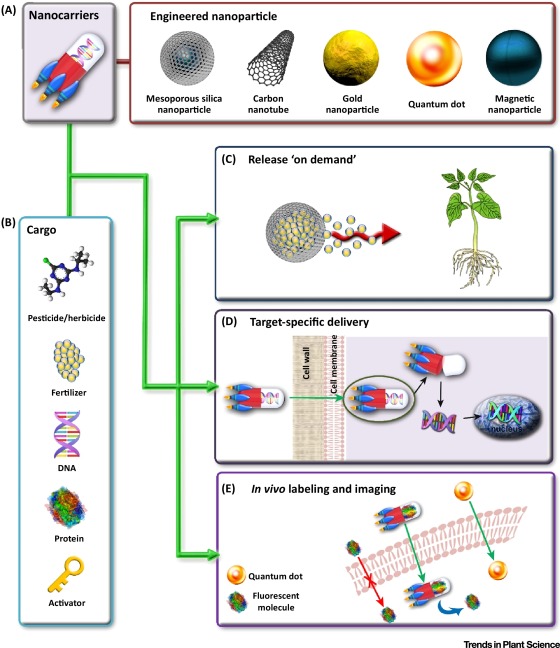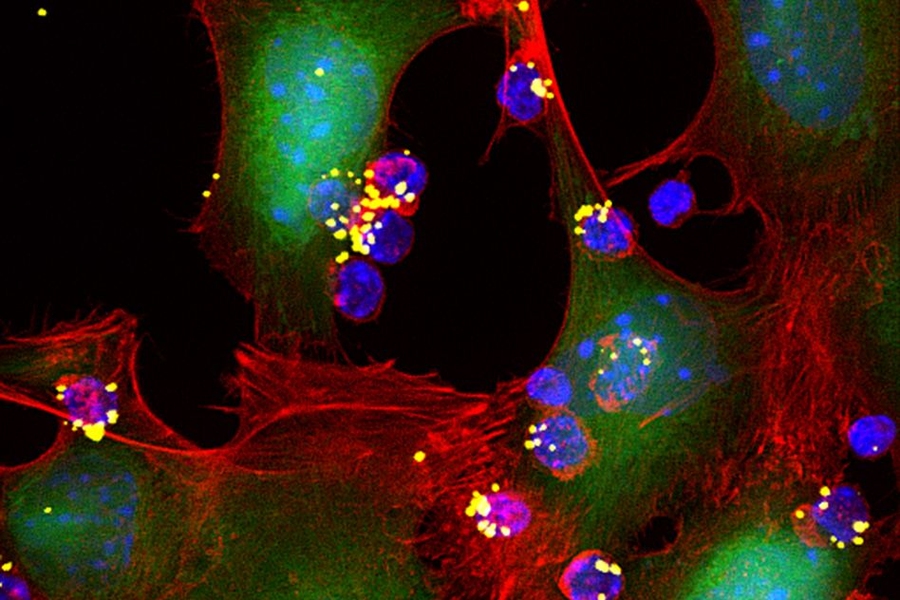
INTRODUCTION
Nanotechnology is a novel and rapidly evolving technology that has the potential to alter the poultry business in India and around the world. In recent years, nanotechnologies have become increasingly popular in livestock husbandry. Nanotechnology is a branch of science and technology concerned with the study and creation of nanostructured materials. The nanoparticles can bypass the physiological ways of nutrient distribution and transport across tissue and cell membranes, and have more bioavailability to the target sites. This technology has a significant impact on human and animal food production, processing, transportation, storage, safety, and security. In the field of poultry production, there is a growing interest in the application of nanotechnology and various compounds are used as a supplemental source of trace minerals in diets. Nanotechnology can reduce the time of production of meat and eggs. It can decrease antibiotic residue in animal products, reduce environmental contamination and replace antibiotics as growth boosters. The potential of nanotechnology in broiler production cannot be fully appreciated yet because of insufficient knowledge.
Nanomaterials are present in different forms including metal and metal oxide nanoparticles nanoemulsions, nanoporous materials such as nanoclay, nanoshells, nanorods, dendrimers, carbon nanotubes etc. Other types of nanomaterials which are utilized for illness detection, therapy, medication administration, animal nutrition, breeding, and reproduction include liposome nanoparticles, micellar nanoparticles, polymeric nanoparticles, dendrimer nanoparticles, metallic nanoparticles, and carbon nanoparticles.
APPLICATION OF NANOTECHNOLOGY IN POULTRY PRODUCTION
BROILER PRODUCTION

Nanosilver particles: It showed a negative impact on pathogenic intestinal microorganisms, resulting in improved nutrient absorption, feed intake, weight gain, and feed efficiency in broiler chicks. Nanosilver feed supplementation results in a dose-dependent reduction in lymphoid organ weights, which may be correlated with the antimicrobial property of silver nanoparticles which induced a higher proportion of non-pathogenic organisms than pathogenic ones in the gut. Nanosilver particles also reduces the number of Escherichia coli, Streptococcus, harmful Salmonella, and total number of mesophilic bacteria in the litter of broilers indicating bactericidal activities of these particles.
Nanoselenium particles: Dietary inoculation of 1.20 mg/kg nanoselenium found to increase the survival rate and improving both the average daily gain and feed to gain ratio.
Nanozinc particles: Supplementation of broiler basal diet with ZnO nano particles inhibited the growth of mycotoxic fungi (A. flavus, A. ochraceus and A. niger) and consequently mycotoxicosis conditions. In addition, compared to inorganic Zn form, supplementation and/or substitution with organic Zn and/or nano Zn form (20 ppm) had a positive influence on broilers body weight, body weight gain and feed conversion rate, Zn concentration in bird’s serum and tissue and increased return and net profit.
Nanodicalcium phosphate (NDCP): It’s inclusion in broiler diets reduces dietary dicalcium phosphate (DCP) by 75%, and the use of dicalcium phosphate in nanoparticle size allows for a 50% reduction in excreted Calcium and Phosphorus reducing the impact of poultry on environmental pollution.
Nanocopper particles: In chickens, copper nanoparticles loaded chitosan improves growth and immune status, increases protein synthesis and had a positive effect on broiler chickens caecal microbiota.
Nanocopper silicate particles: It alters the intestinal microbiota of chickens by raising Lactobacillus species numbers while decreasing E. coli counts. Intramuscular injection of copper nanoparticles in chickens showed improved growth, increased haemoglobin levels, elevated copper and protein levels in serum and increased arginine levels in the liver.
Nanochromium particles: Chromium is well known for its function in protein metabolism. Because it is a component of the glucose tolerance factor (GTF), chromium enhances insulin action and regulates the glucose metabolism in the blood. Nanochromium increases protein contents in thigh and breast muscles and lowered fat and cholesterol concentrations in thigh muscles. Chromium at 0.5 mg/kg diet improved breast and thigh muscle protein content, average daily gain and feed efficiency and lowered cholesterol and fat in thigh muscles of the broilers. Supplementing broilers with chromium picolinate (CrPic) had no effect on body weight, feed consumption, or feed conversion ratio during the first 21 days, but it reduce mortality and improve breast meat yield at 300 and 400 ppb levels. Broilers reared under heat stress gained more weight, feed intake and feed efficiency when supplemented with increased level of chromium (200,400, 800 or 1200 ppb CrPic). In broilers, diets supplemented with CrPic have been shown to increase carcass yield.
Inorganic minerals in chicken diet premixes are reduced by at least four times when nanocrystalline metals like iron, copper, zinc oxid, and selenium are added, allowing chickens to absorb feed minerals more efficiently and reducing the risk of environmental pollution.
LAYERS PRODUCTION
Nanoselenium particles: The addition of 0.3 mg/kg nanoselenium to the dry diet improves the physiological effects of chicks. A layer hen diet supplemented with nanoSe (0.25 ppm) improves productivity and glutathione peroxides activity, resulting in Se-enriched eggs that could supply 50% (35 g) of the human Se recommended daily allowances.
Nanozinc and selenium particles: Dietary supplementation of aged layers with nano forms of zinc and Se resulted in a significant increase in serum total protein and antibody titres against Newcastle disease virus, a high level of blood haemoglobin, an increase in relative weight of the spleen and oviduct length, an increase in hen day egg production rate and egg weight, better albumen and egg shell quality and an improvement in feed conversion.
Nanocopper and zinc particles: As demonstrated by aminopeptidase activity, incorporating some minerals in nano form into the diet of hens, particularly Cu and Zn in doses covering 10% of need is critical for maintaining homeostasis in muscles.
EMBRYONATED CHICKEN EGGS
Nanocopper particles: Copper nanoparticles inoculated in ovo at doses ranging from 4 to 16μg/egg demonstrated no adverse effects on chicken embryos. Copper nanoparticles at a concentration of 50 mg/kg increases oxygen consumption and heat production both are important regulators in different stages of chicken embryo development. Also exhibit proangiogenic properties on a systemic level, promoting blood vessel development during embryogenesis and thus increase body weight, feed conversion ratio, and breast and leg muscles in broiler chickens. In ovo inoculation of copper nanoparticles has also been found to stimulate long bone development during embryogenesis.

Nanosilver particles: Silver nanoparticles chelated with amino acids, threonine and cysteine at a concentration of 50 mg/kg promote immunological competence in embryos and chickens as well as muscle morphology without altering broiler performance during embryo growth.
CONFLICTS WITH NANOTECHNOLOGY
The promise of nanotechnology in chicken production has yet to be fully realised due to a lack of sufficient information. It can have a variety of positive outcomes, but it can also have a variety of negative outcomes or unknown risks for humans, animals, and the environment. Some of the few future nanotechnology challenges include increasing feed efficacy, controlling nutrient absorption, combating pathogens, targeted drug delivery, growth promoters, modifying egg contents such as full protein or cholesterol-free eggs, reducing energy and protein waste and lowering poultry meat prices.
As an experiment for illness prevention, nanoparticle materials could be incorporated in poultry feed. However, feed inoculation of these particles has several challenges, including particle processing, dispersion, and feed storage conditions as well as their low bioavailability. Because of the low resistance to microorganism growth, poor water retention and poor carcass traits in the meat of animals fed on these particles, the meat of these animals was of poor quality. Furthermore, there is a paucity of knowledge about the fate of ingested nanoparticles in the human body, making it critical to explore routes of exposure as well as gather basic facts about their absorption, distribution, metabolism, and excretion. Nanomaterials potential toxicity hasn’t been thoroughly investigated, thus risk evaluations, such as hazard identification, hazard characterization and exposure assessment are necessary.
CONCLUSION
Recent research has found that supplementing chickens with nanomaterials in various forms has a positive impact on performance, health, and immunity as well as reducing pathogen gut load. They are still in the early stages of development, therefore a lot of effort needs to be done to ensure the safety of their use in animal nutrition, avoid any harm to livestock, the environment and humans to bridge the knowledge gap.

1Manoj Kumar Singh, 2Jinu Manoj and 3R.K.Sharma
1Assistant Professor, COVAS, SVPUAT, Meerut, Uttar Pradesh
2ADIO, College Central Laboratory, LUVAS, Hisar, Haryana
3Professor & Head, Department of Livestock Production Management, GBPUAT, Pantnagar, Uttarakhand
Email: drmanoj611@gmail.com


















